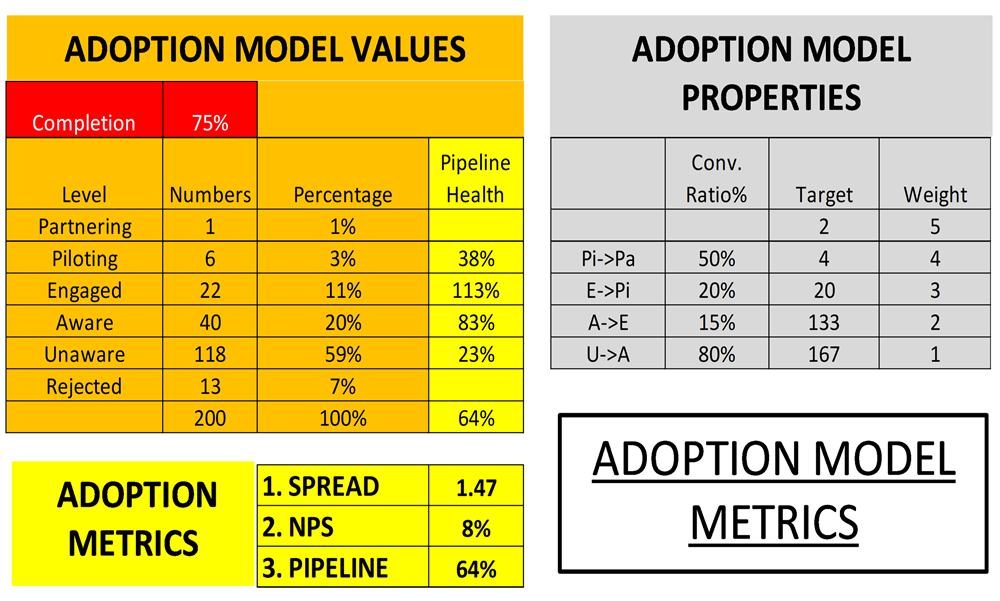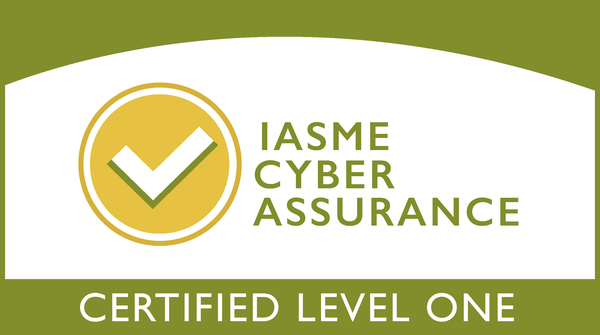1. INTRODUCTION
We all know that business simulations can be used to see how individuals and teams handle and derive experiential learning from challenging scenarios in a safe and risk-free environment. This short article introduces Adoption Model Simulation which can be used to model almost any business situation which has some form of customer or user adoption at its core.
Not surprisingly, “adoption” turns out to be at the core of the majority of business endeavours including:
- New market entry
- New product launch
- New venture or start-up business
- Business strategy scenarios
- Customer service programmes
- Major internal change programmes
- Marketing programmes
- Process/practice improvement programmes
- Public health Campaigns
2. ADOPTION MODEL DEFINITIONS
What do we mean by “adoption” and “adoption model”?
My definition of Adoption is “taking on-board and making habitual use of products or practices which may be new or may replace previous products or practices.”
An Adoption Model “makes explicit the intermediate stages an adopter can go through from initially becoming aware right up to the point of becoming a habitual user.”
Adoption Models tend to have the following characteristics:
- They act as Pipelines or Funnels or Ladders from the lower levels of adoption to the higher levels
- The objective is usually to move UP the Ladder but it is also possible to move DOWN and/or to jump off the ladder altogether (Natural Decay, Dissatisfaction and Rejection). A good example of a planned reverse adoption model is giving up smoking or reducing alcohol consumption.
- Numbers normally reduce as you move up the ladder and this reduction is specified using “Conversion Ratios” from each lower level to the next higher level
- Each level on the ladder may have specific properties such as the volume of products purchased or chocolate consumed at that level.
3. COMMON ADOPTION MODELS IN BUSINESS
Scenario 1: The Customer Loyalty Ladder
For example:
- Loyal Customers
- Regular Customers
- Occasional Customers
- New Customers
- Target Customers
Loyal Customers typically have larger average consumption, satisfaction and loyalty than Regular Customers who in turn are higher than Occasional Customers etc. Target Customers might also be split into Non-Category (not using the product) or Category (using a competitor’s product).
This kind of adoption model is often at the heart of Business Acumen simulations such as XSIM.
Scenario 2: The Sales Pipeline
For example:
- Customers
- Prospects
- Suspects
- Conversations
- Opportunities
This model can be extended with, for example, Prospects being either new prospects, recycled Prospects or Customers coming up for renewal in a subscription revenue model.
This kind of adoption model is at the heart of Sales Process Optimization simulations.
Scenario 3: The Change Adoption Model
For example:
- Change Champions
- Change Adopters
- Change Experimenters
- Change Aware
- Change Unaware
- Change Rejectors
This kind of adoption model is at the heart of Change Management Simulations such as COHORT or CHAPTER.
4. INSIGHTS FROM ADOPTION MODEL SIMULATION
There are some very important learnings when participants use Adoption Model Simulations including the following:
1. Direct adoption needs to address all levels of the adoption model not just the top and bottom levels. Pipeline Health measures (discussed in the next section) can warn you if you are neglecting key parts of your adoption model – an oversight which may not be obvious in the short-term.
2. Not all adopters are equal. Adoption by Opinion Leaders can create positive Word of Mouth (WoM) which encourages other users to adopt.
3. It is not just direct adoption activities that contribute to user adoption. There are two other very important types of activity – Preparation (fitness) and Risk mitigation (insurance). Many adoption failures involve either doing too little or too much of these two activities!
5. ADOPTION MODEL METRICS
There are 3 key Adoption Model Metrics which are illustrated in the figure below:
- Spread
- Satisfaction
- Pipeline

“Spread” (aka Penetration) is a single number which measures the degree of adoption. It is the weighted average of the number of adopters across all the levels of the model. In the example, in a highly unlikely scenario of all 200 users reaching “Partnering” (Level 5) then the Spread would be 5.00. Conversely if all 200 users remain “Unaware” then the Spread would be 1.00.
“Satisfaction” can be measured in a number of different ways – here we show the Net Promoter Score (NPS) which is defined as %Promoters - %Detractors. In this example, we have defined NPS in a generous way as Promoters = (Partnering + Piloting + Engaged) and Detractors = Rejected. However this value is still only 8% whereas organizations with top customer satisfaction tend to operate at the 70%-80% bracket which shows that there is definitely a potential satisfaction problem in this dataset.
“Pipeline” is a measure of the health of each stage in the adoption model and uses conversion rates and targets to compare the values at each level with the ideal values at the particular stage of the exercise (in this case 75% complete). It shows clearly that there is a problem in the rate at which users are being made aware of the new product/practice to be adopted. Pipeline is a very important metric as adoption managers can become fixated just on single levels of their Adoption Models and by the time the problem is spotted it is too late.
For example, a very common problem in organizations is when sales leaders and their staff prioritise pushing prospective clients over the line to achieve annual targets (and bonuses) in the last quarter of a year. An undesirable consequence of this is that they then find the “cupboard in bare” in the first quarter of the new financial year with a shortage of prospects or suspects. Such problems can be almost impossible to fix quickly once they have been allowed to fully develop!
6. TYPES OF ADOPTION MODEL SIMULATION
One of the key decisions in Adoption Model Simulation is whether you must use a standard simulation or whether you can build your own. The downside in building your own is the time and cost involved. SPREAD addresses this problem by offering a customizable Adoption Model Platform which is easy to totally customize with your own project and adoption model.
7. CONCLUSIONS
Adoption Model Simulations can be used to effectively model many common business scenarios including business start-up, existing business growth, change management, customer-focus, marketing programmes and business development campaigns. There are off-the-shelf simulations (e.g. XSIM and COHORT) and simulation platforms e.g. SPREAD) which can be readily customised to specific organizational requirements.



